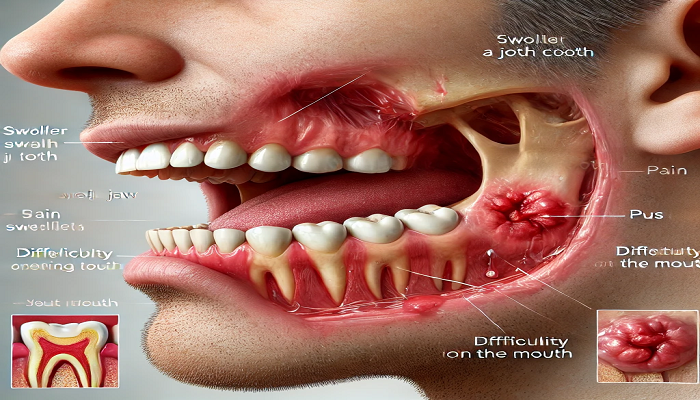Health
Steph Curry finally got the contract he deserves from the Warriors
Nemo enim ipsam voluptatem quia voluptas sit aspernatur aut odit aut fugit, sed quia consequuntur magni dolores eos qui.
Lorem ipsum dolor sit amet, consectetur adipisicing elit, sed do eiusmod tempor incididunt ut labore et dolore magna aliqua. Ut enim ad minim veniam, quis nostrud exercitation ullamco laboris nisi ut aliquip ex ea commodo consequat.
Nemo enim ipsam voluptatem quia voluptas sit aspernatur aut odit aut fugit, sed quia consequuntur magni dolores eos qui ratione voluptatem sequi nesciunt.
Et harum quidem rerum facilis est et expedita distinctio. Nam libero tempore, cum soluta nobis est eligendi optio cumque nihil impedit quo minus id quod maxime placeat facere possimus, omnis voluptas assumenda est, omnis dolor repellendus.
Nulla pariatur. Excepteur sint occaecat cupidatat non proident, sunt in culpa qui officia deserunt mollit anim id est laborum.
Sed ut perspiciatis unde omnis iste natus error sit voluptatem accusantium doloremque laudantium, totam rem aperiam, eaque ipsa quae ab illo inventore veritatis et quasi architecto beatae vitae dicta sunt explicabo.
“Duis aute irure dolor in reprehenderit in voluptate velit esse cillum dolore eu fugiat”
Neque porro quisquam est, qui dolorem ipsum quia dolor sit amet, consectetur, adipisci velit, sed quia non numquam eius modi tempora incidunt ut labore et dolore magnam aliquam quaerat voluptatem. Ut enim ad minima veniam, quis nostrum exercitationem ullam corporis suscipit laboriosam, nisi ut aliquid ex ea commodi consequatur.
At vero eos et accusamus et iusto odio dignissimos ducimus qui blanditiis praesentium voluptatum deleniti atque corrupti quos dolores et quas molestias excepturi sint occaecati cupiditate non provident, similique sunt in culpa qui officia deserunt mollitia animi, id est laborum et dolorum fuga.
Quis autem vel eum iure reprehenderit qui in ea voluptate velit esse quam nihil molestiae consequatur, vel illum qui dolorem eum fugiat quo voluptas nulla pariatur.
Temporibus autem quibusdam et aut officiis debitis aut rerum necessitatibus saepe eveniet ut et voluptates repudiandae sint et molestiae non recusandae. Itaque earum rerum hic tenetur a sapiente delectus, ut aut reiciendis voluptatibus maiores alias consequatur aut perferendis doloribus asperiores repellat.

Health
10 Symptoms of a Jaw Infection After a Root Canal and When to Seek Help

A jaw infection after a root canal is a serious complication that can cause discomfort and may lead to further dental issues if not addressed in time. While root canal treatments are generally successful, there are instances where infections can develop afterward, causing a range of symptoms. Understanding the symptoms of a jaw infection after a root canal can help you take timely action to prevent any severe complications.
In this article, we’ll discuss the 10 common symptoms of a jaw infection after a root canal and when you should seek professional help.
1. Persistent Pain Around the Treated Tooth
Pain is one of the first signs that something might be wrong after a root canal. If the discomfort lasts longer than expected or increases in intensity, it could be an indication of a jaw infection after a root canal. Pain can vary from mild discomfort to sharp, throbbing sensations, especially when chewing or applying pressure to the tooth.
2. Swelling and Tenderness
Swelling around the treated tooth or the jaw area is another common symptom. The swelling may be localized or more widespread, and the area may feel warm or tender to the touch. Swelling is a sign that the body is responding to an infection, and if left untreated, it can lead to more severe complications.
3. Pus or Discharge from the Gums
Infections can lead to the formation of pus, which may drain from the gum near the treated tooth. This discharge is often a clear or yellowish fluid that may have a foul odor. If you notice any pus or abnormal discharge, it’s essential to consult your dentist immediately, as this could indicate a serious jaw infection after a root canal.
4. Bad Breath or Unpleasant Taste
If you experience persistent bad breath (halitosis) or an unusual taste in your mouth following a root canal, it could be a sign of infection. The infection can release unpleasant odors or tastes, signaling the presence of bacteria or pus in the affected area. This is a clear indicator that professional dental intervention is necessary.
5. Fever
A fever is your body’s natural response to an infection. If you develop a fever after undergoing a root canal treatment, it could mean that a jaw infection after a root canal has spread and requires immediate attention. High temperatures coupled with other symptoms like swelling or pain are strong indications of a need for medical treatment.
6. Sensitivity to Temperature Changes
While some sensitivity to hot or cold is normal after a root canal, heightened sensitivity or discomfort to temperature changes can be a symptom of an infection. If the pain persists or worsens when consuming hot or cold foods and drinks, it may suggest that bacteria have entered the tooth and spread to the surrounding jaw tissue.
7. Difficulty Opening the Mouth
Increased pain, swelling, and infection may cause difficulty in fully opening your mouth. This condition, known as trismus, can make eating, speaking, or even swallowing more challenging. If you experience this after your root canal, it is crucial to seek help from a dentist.
8. Red or Inflamed Gums
Healthy gums should appear pink and firm. If you notice that the gums around the treated tooth become red, swollen, or bleed easily, this could be a sign of infection. An infection in the jaw can irritate the gums, making them more prone to inflammation and bleeding.
9. Numbness in the Jaw or Face
In rare cases, a jaw infection after a root canal can lead to nerve damage, which may result in numbness or tingling in the jaw, chin, or lips. If you notice any unusual numbness or tingling in the areas surrounding the treated tooth, you should seek urgent dental care.
10. Lymph Node Swelling
Swollen lymph nodes are a common sign of infection in the body. If your lymph nodes in the neck or jaw area become enlarged and tender to the touch, this could indicate that the infection from your root canal has spread. Lymph node swelling is a serious symptom that warrants immediate dental attention.
What Causes Jaw Infections After a Root Canal?
A jaw infection after a root canal can occur due to several reasons:
1. Incomplete Removal of Bacteria
- If all bacteria inside the tooth are not completely cleaned out, an infection may persist.
- Some bacteria may remain in tiny canals or cracks, leading to reinfection.
2. Cracks or Leaks in the Treated Tooth
- If the tooth has a hidden crack, bacteria can enter and cause an infection.
- A poorly sealed filling or crown can allow bacteria to seep in over time.
3. Weakened Immune System
- People with weakened immune systems due to diabetes, autoimmune diseases, or other conditions are more prone to infections.
4. Poor Oral Hygiene
- Failing to maintain good oral hygiene after a root canal increases the risk of infection.
How to Prevent Jaw Infections After a Root Canal?
1. Maintain Good Oral Hygiene
- Brush and floss regularly to prevent bacterial buildup.
- Use an antibacterial mouthwash to kill germs.
2. Follow Your Dentist’s Instructions
- Take all prescribed medications as directed.
- Avoid hard or sticky foods that can damage the treated tooth.
3. Schedule Regular Dental Check-Ups
- Visit your dentist for follow-up appointments to ensure proper healing.
- Get any minor issues fixed before they turn into major problems.
When to Seek Help for a Jaw Infection After a Root Canal
If you notice any of the symptoms of a jaw infection after a root canal, it’s important to seek help promptly. The earlier you address the infection, the less likely it is to cause complications like abscesses or the spread of infection to other areas of the body.
Here are some guidelines on when to contact your dentist or healthcare provider:
- Persistent Pain: If the pain doesn’t subside after a few days or becomes more severe, contact your dentist.
- Swelling and Discharge: If swelling doesn’t go down or you notice any discharge from the gum, schedule an appointment as soon as possible.
- Fever or Systemic Symptoms: If you develop a fever or any other signs of systemic infection, such as fatigue or chills, contact a healthcare professional immediately.
- Difficulty Moving the Jaw: If you experience difficulty opening your mouth or extreme discomfort while doing so, it’s essential to get medical attention.
- Numbness or Tingling: If you notice numbness, tingling, or a loss of sensation around the treated area, don’t delay in contacting your dentist.
When Should You See a Dentist?
If you experience any of the symptoms above, seek dental care immediately. Delaying treatment can lead to severe complications, such as:
- Spread of infection to other parts of the body
- Bone loss in the jaw
- The need for tooth extraction
- Systemic infections like sepsis (life-threatening condition)
Read More: Indian Food That Women Should Avoid While Pregnancy
Conclusion
The symptoms of a jaw infection after a root canal should never be ignored. Pain, swelling, discharge, and fever are just a few of the signs that something may be wrong. If you experience any of these symptoms, it’s crucial to seek professional dental care as soon as possible to prevent the infection from spreading and causing further damage. By recognizing the symptoms early and addressing the issue promptly, you can ensure a full recovery and maintain the health of your teeth and jaw.
Health
Insurance Code for Removal of Excess Abdominal Skin Folds

The insurance code for removal of excess abdominal skin folds is L8491. This code is used to describe the removal of extra skin and tissue from the abdomen that can cause pain or interfere with daily activities. This procedure is also known as an abdominoplasty, or a tummy tuck.
The insurance code covers both inpatient and outpatient procedures, as well as pre-operative and post-operative care.
If you are considering surgery to remove excess abdominal skin folds, also known as an abdominoplasty, you may be wondering what the insurance code is for this procedure. The good news is that most insurance companies will cover at least a portion of the cost of this surgery if it is deemed medically necessary. There are a few different codes that can be used for an abdominoplasty, depending on the specific circumstances.
The most common code used is 15530, which covers the removal of excess skin and fat from the abdomen. This code can be used for both partial and full abdominoplasties. If your surgeon also tightens the abdominal muscles during your procedure, an additional code (14960) may be used.
As with any surgery, there are always some risks involved. Be sure to discuss these with your surgeon prior to scheduling your procedure so that you can make an informed decision about whether or not this surgery is right for you.
How to Get Insurance to Cover Skin Removal
If you’re looking to get insurance to cover skin removal, there are a few things you’ll need to do. First, you’ll need to consult with your doctor to see if they believe the surgery is medically necessary. Once you have documentation from your doctor, you can then start the process of filing a claim with your insurance company.
Most insurance companies will require that you try other methods of treatment before they will approve coverage for skin removal surgery. This means that you may need to try things like topical creams or radiation therapy before your insurance company will agree to pay for the surgery. However, if your doctor believes that surgery is the best course of treatment, they will likely work with you and your insurance company to help get the surgery covered.
When it comes time to file a claim, be sure to have all of your documentation in order. Your insurance company will want to see proof of medical necessity, as well as any quotes or estimates for the cost of the surgery. If everything looks in order, your claim should be approved and you’ll be on your way to getting the skin removal surgery that you need!
What are the Codes for Panniculectomy?
Panniculectomy is a type of surgery that removes excess skin and fat from the lower abdomen. The procedure is also known as an abdominal panniculectomy or an apronectomy. Panniculectomies are typically performed to treat patients who have undergone massive weight loss and are left with large amounts of excess skin.
This can cause physical pain and discomfort, as well as problems with hygiene. Panniculectomies can also be performed for cosmetic reasons. The codes for panniculectomy vary depending on the extent of the surgery.
A partial panniculectomy (CPT code 15830) involves removal of the excess skin and fat from below the belly button. A full panniculectomy (CPT code 15831) includes removal of all the excess skin and fat from the lower abdomen, including any tissue that hangs over the pubic area (known as a paunch). In some cases, liposuction may be used in addition to or instead of a panniculectomy (CPT code 15832).
As with any surgery, there are risks associated with panniculectomies. These include bleeding, infection, blood clots, and adverse reactions to anesthesia. However, these risks are generally low and most patients experience no complications following their surgery.
What is the Cpt Code for Removal of Abdominal Fat?
The CPT code for removal of abdominal fat is 41500. This code is used to report the surgical procedure known as liposuction, or suction-assisted lipectomy, of the abdomen. Liposuction is a surgical procedure that removes fat from the body using a suction device.
The CPT code for removal of abdominal fat includes both subcutaneous and intra-abdominal fat.
What is the Cpt Code 15847?
CPT code 15847 is a medical code that describes the removal of skin from the breast. This procedure is also known as a skin-sparing mastectomy or nipple-sparing mastectomy. It is often performed in cases of breast cancer, where the goal is to remove as much of the cancerous tissue as possible while sparing as much healthy tissue as possible.
The CPT code 15847 can be used for either partial or total removal of skin from the breast.
What is Procedure Code 15830?
Procedure code 15830 is a medical code used to describe the surgical procedure known as Mohs micrographic surgery. This type of surgery is used to treat skin cancer, and is considered to be the most effective method of treating this disease. The procedure involves removing the cancerous tissue layer by layer, and examining each layer under a microscope.
Once all of the cancerous tissue has been removed, the wound is then closed with stitches or skin grafts.
Conclusion
In order to remove excess abdominal skin folds, also known as panniculus, you must have a valid insurance code. The most common codes used are 15730 and 15830. These codes are designated for the removal of extra skin and tissue in the abdominal area that hangs down below the waistline.
It is important to note that not all insurance companies will cover the removal of excess abdominal skin folds, so it is important to check with your provider beforehand.
Health
Indian Food That Women Should Avoid While Pregnancy
Pregnancy is a beautiful and crucial phase in a woman’s life. During this period, maintaining a healthy diet is essential for both the mother and the developing baby. While Indian cuisine is rich in flavors and nutrients, there are certain foods that should be avoided to ensure a safe and healthy pregnancy. Here’s a guide to Indian foods that women should avoid during pregnancy.
Pregnancy can be a very delicate time in a woman’s life. Every visit to the baby scan clinic, each signal, every problem, has a lot to do with your pregnancy. Just like waiting for your baby to kick, so do the scans. Every woman desires spicy foods during pregnancy but needs Food That Women Should Avoid While Pregnancy. It is important to be able to control your diet by having a good understanding of different food types.
Here is the list of some Avoiding foods that a woman should contain while pregnant also we can know about What Is Protective food? 15+ Best Example To Improve Stamina
Salty foods While pregnancy
Some women feel the need to eat salty and spicy foods while pregnant. Although salty foods can be satisfying during pregnancy, high salt levels can cause increased water retention that can lead to serious pregnancy complications.
Street food While pregnancy
Avoid street food. These foods should be avoided while pregnant. Pregnant mothers are very sensitive and should be cautious about what foods they eat. These foods may be prepared with contaminated water, unclean utensils, or improperly stored ingredients, which can lead to foodborne illnesses. To stay safe, it’s best to avoid street food during pregnancy.
Aloe vera While pregnancy
Aloe vera may cause premature contractions. It can also affect your uterus. Consuming aloe Vera can cause nausea and vomiting. It can also be dangerous for unborn babies. Avoid consuming aloe during pregnancy. It can cause miscarriage during the second trimester.
Chicken While pregnancy
Pregnant women may find chicken harmful. Chicken meat can have a number of bacteria and parasites which can pose a health risk to your baby. Eye problems, epilepsy, and disabilities are some of the most common health issues for women.
Raw eggs Food While pregnancy
Most miscarriages are caused by second-trimester miscarriage. This is due to food with raw eggs. They are at higher risk of increasing Grade 2 fatty liver contracting the Salmonella virus, which can cause many complications during pregnancy.
Papaya and Pineapple
While fruits are generally considered healthy, there are a few exceptions during pregnancy. Raw papaya, especially its unripe form, contains an enzyme called papain, which can trigger uterine contractions and potentially lead to miscarriage.
Pineapple is also sometimes avoided during pregnancy, as it contains bromelain, which may soften the cervix and cause early labor.
Cooked or ripe papayas and pineapples can be consumed in moderation, but it’s best to consult a healthcare provider before including them in your diet.
Conclusion
Pregnancy is a time to be extra cautious with your food choices. While Indian cuisine offers a vast array of delicious options, certain foods and preparation methods can pose risks to both the mother and baby. It’s essential to prioritize food safety and ensure that your diet is balanced, nutritious, and free from harmful substances. Always consult your doctor or a nutritionist to ensure that you’re making the best choices for a healthy pregnancy.
-

 Entertainment2 months ago
Entertainment2 months agoUnderstand: Post-Apocalyptic Literature Bingo: Songs of Your Decay
-

 Business2 weeks ago
Business2 weeks agoThe Art of Ceramic Bowls: Handmade vs. Machine-Made
-

 Attitude Instagram Username3 weeks ago
Attitude Instagram Username3 weeks agoTop 50+ Instagram Usernames For Couples | Cute Couple Instagram Names
-
Education1 month ago
11 Important Difference Between Seasonal Work and Internship: You Should Know
-

 Health1 month ago
Health1 month agoTop Strategies to reduce patient bad debt with Qualify Health
-

 Other Blog2 months ago
Other Blog2 months agoWhat is the ://vital-mag.net Blog About?
-

 Health2 months ago
Health2 months agoLiving Boldly with ADHD: Breaking Stigma and Stereotypes
-

 Technology2 months ago
Technology2 months agoSearch Engines that Search URL and not Description | Top URL Tools




